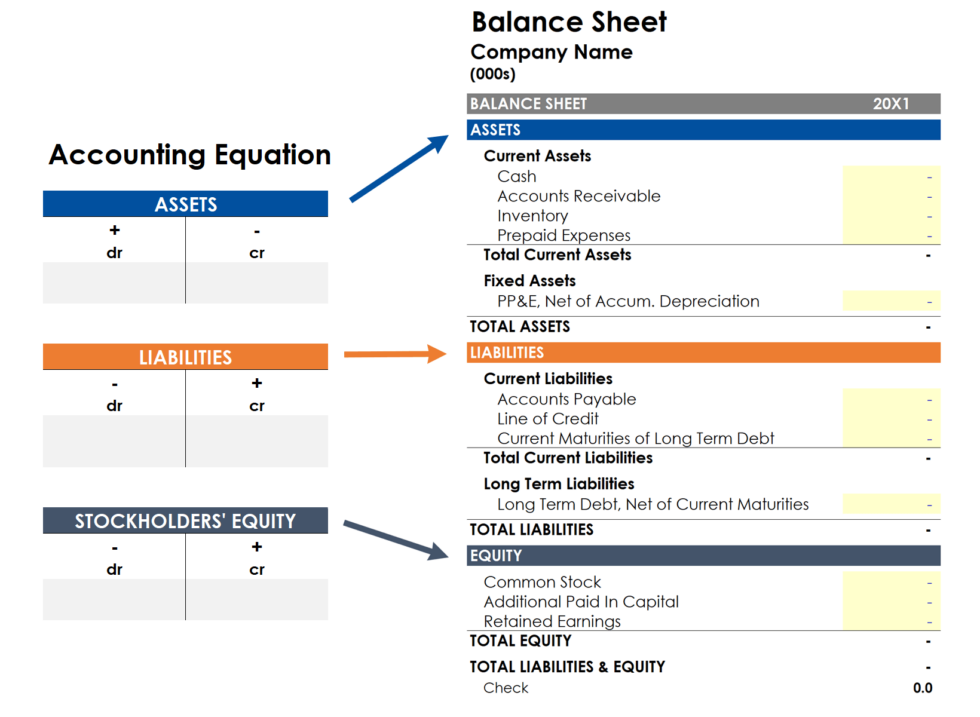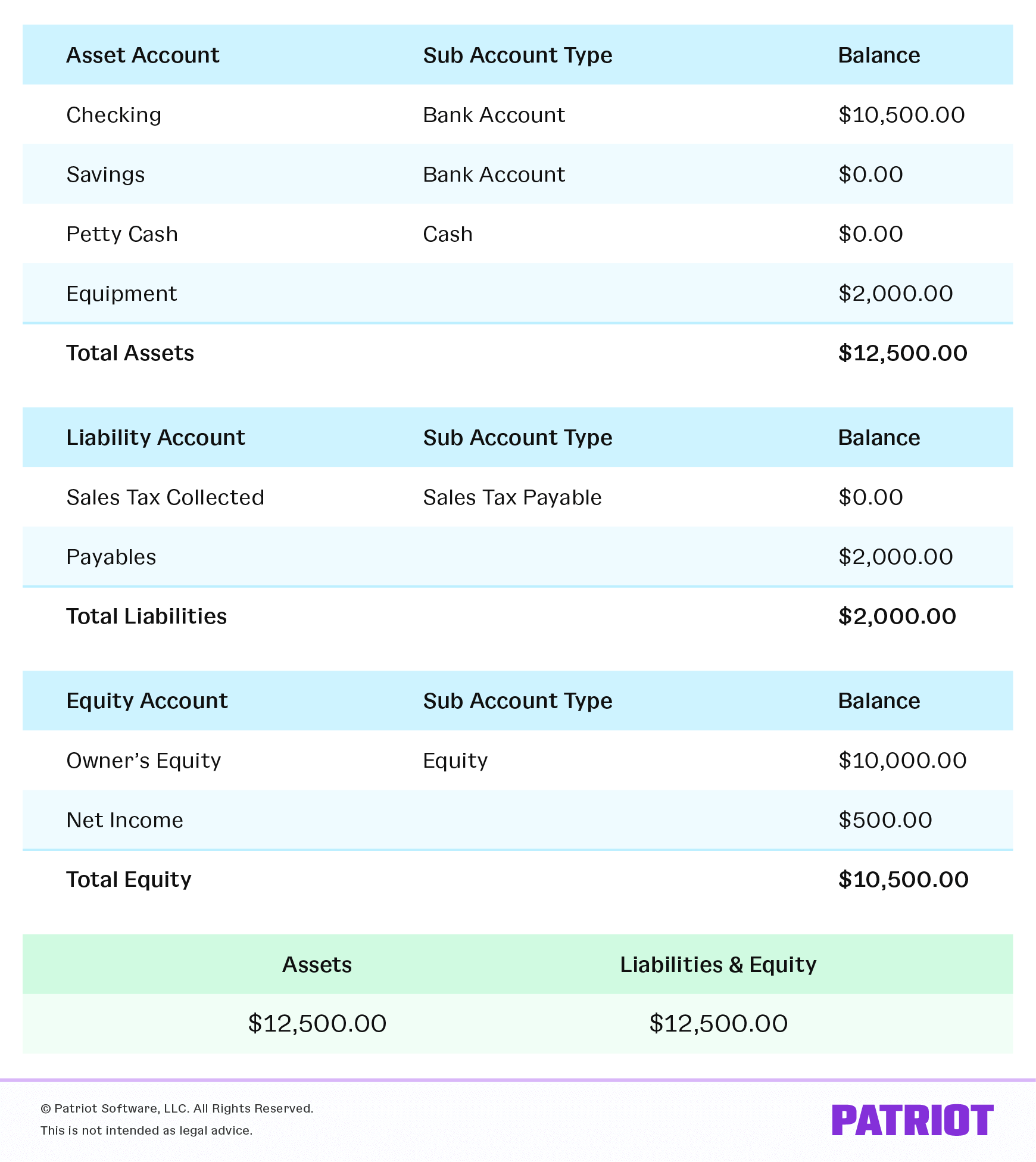Balance Sheet Accounting Equation - The balance sheet, also called the statement of financial position, is the third general purpose financial statement prepared during the accounting cycle. The accounting equation is also known as the basic accounting equation or the balance. Assets = liabilities + stockholders’ (or owner’s) equity. The balance sheet formula is assets = liabilities + shareholders' equity. As such, the balance sheet is divided into two sides (or. Each entry made on the debit side has a corresponding entry or coverage on the credit side. The formula reflects the fundamental accounting principle that the total value of a company's assets equals the sum of. Assets = liabilities + equity. The structure of the balance sheet reflects the accounting equation: The balance sheet is based on the fundamental equation:
The balance sheet is based on the fundamental equation: The formula reflects the fundamental accounting principle that the total value of a company's assets equals the sum of. The accounting equation is also known as the basic accounting equation or the balance. The balance sheet, also called the statement of financial position, is the third general purpose financial statement prepared during the accounting cycle. The balance sheet formula is assets = liabilities + shareholders' equity. Assets = liabilities + equity. As such, the balance sheet is divided into two sides (or. The structure of the balance sheet reflects the accounting equation: Each entry made on the debit side has a corresponding entry or coverage on the credit side. Assets = liabilities + stockholders’ (or owner’s) equity.
As such, the balance sheet is divided into two sides (or. The formula reflects the fundamental accounting principle that the total value of a company's assets equals the sum of. Each entry made on the debit side has a corresponding entry or coverage on the credit side. The structure of the balance sheet reflects the accounting equation: The balance sheet formula is assets = liabilities + shareholders' equity. The accounting equation is also known as the basic accounting equation or the balance. Assets = liabilities + equity. Assets = liabilities + stockholders’ (or owner’s) equity. The balance sheet, also called the statement of financial position, is the third general purpose financial statement prepared during the accounting cycle. The balance sheet is based on the fundamental equation:
Balance Sheet Meaning, Format & Examples TutorsTips
The structure of the balance sheet reflects the accounting equation: As such, the balance sheet is divided into two sides (or. The formula reflects the fundamental accounting principle that the total value of a company's assets equals the sum of. The balance sheet, also called the statement of financial position, is the third general purpose financial statement prepared during the.
The Accounting Equation A Simple Model
The balance sheet formula is assets = liabilities + shareholders' equity. Assets = liabilities + equity. The balance sheet is based on the fundamental equation: The structure of the balance sheet reflects the accounting equation: Each entry made on the debit side has a corresponding entry or coverage on the credit side.
Balance Sheet Accounts, Examples, and Equation Financial
The structure of the balance sheet reflects the accounting equation: The balance sheet is based on the fundamental equation: The balance sheet formula is assets = liabilities + shareholders' equity. The balance sheet, also called the statement of financial position, is the third general purpose financial statement prepared during the accounting cycle. Each entry made on the debit side has.
The Balance Sheet Represents Accounting Equation Tessshebaylo
Assets = liabilities + equity. The structure of the balance sheet reflects the accounting equation: Each entry made on the debit side has a corresponding entry or coverage on the credit side. Assets = liabilities + stockholders’ (or owner’s) equity. The formula reflects the fundamental accounting principle that the total value of a company's assets equals the sum of.
The Balance Sheet Represents Accounting Equation Tessshebaylo
The formula reflects the fundamental accounting principle that the total value of a company's assets equals the sum of. The balance sheet formula is assets = liabilities + shareholders' equity. As such, the balance sheet is divided into two sides (or. Each entry made on the debit side has a corresponding entry or coverage on the credit side. The balance.
Balance Sheet Example AccountingCoach
The balance sheet is based on the fundamental equation: Each entry made on the debit side has a corresponding entry or coverage on the credit side. The accounting equation is also known as the basic accounting equation or the balance. The balance sheet, also called the statement of financial position, is the third general purpose financial statement prepared during the.
Balance Sheet Represents Accounting Equation Tessshebaylo
The balance sheet, also called the statement of financial position, is the third general purpose financial statement prepared during the accounting cycle. The balance sheet formula is assets = liabilities + shareholders' equity. Assets = liabilities + equity. Assets = liabilities + stockholders’ (or owner’s) equity. The structure of the balance sheet reflects the accounting equation:
The Balance Sheet Reflects Accounting Equation Assets Liabilities Owner
The balance sheet is based on the fundamental equation: Each entry made on the debit side has a corresponding entry or coverage on the credit side. The accounting equation is also known as the basic accounting equation or the balance. As such, the balance sheet is divided into two sides (or. The structure of the balance sheet reflects the accounting.
What Is the Accounting Equation? Examples & Balance Sheet
The structure of the balance sheet reflects the accounting equation: The formula reflects the fundamental accounting principle that the total value of a company's assets equals the sum of. Assets = liabilities + equity. Assets = liabilities + stockholders’ (or owner’s) equity. The accounting equation is also known as the basic accounting equation or the balance.
Accounting Formula Assets Liabilities Equity Financial Statement
The balance sheet, also called the statement of financial position, is the third general purpose financial statement prepared during the accounting cycle. Each entry made on the debit side has a corresponding entry or coverage on the credit side. The balance sheet formula is assets = liabilities + shareholders' equity. The formula reflects the fundamental accounting principle that the total.
Assets = Liabilities + Equity.
As such, the balance sheet is divided into two sides (or. Each entry made on the debit side has a corresponding entry or coverage on the credit side. The balance sheet is based on the fundamental equation: The structure of the balance sheet reflects the accounting equation:
Assets = Liabilities + Stockholders’ (Or Owner’s) Equity.
The balance sheet formula is assets = liabilities + shareholders' equity. The accounting equation is also known as the basic accounting equation or the balance. The formula reflects the fundamental accounting principle that the total value of a company's assets equals the sum of. The balance sheet, also called the statement of financial position, is the third general purpose financial statement prepared during the accounting cycle.



/dotdash_Final_Accounting_Equation_Aug_2020-01-5991871f007444398dea7856b442af55.jpg)
/balancesheet.asp-V1-5c897eae46e0fb0001336607.jpg)




